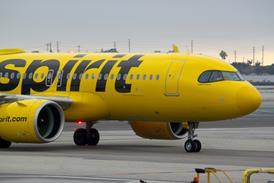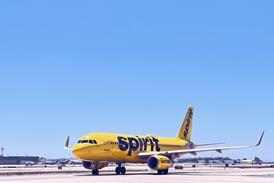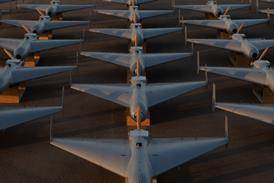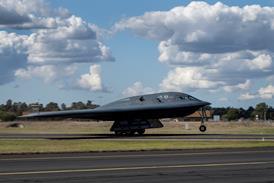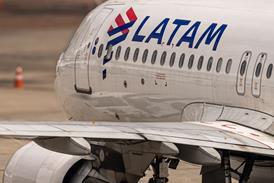Graham Warwick/WASHINGTON DC
Unveiled this week, US President Bill Clinton's 2001 budget includes the seed of a science fiction dream - that one day automated air taxis will whisk us from doorstep to destination at a word of command and the swipe of a credit card.
That dream is still a long way from becoming a reality, but NASA's 2001 budget request seeks funds to begin a programme that aims to make general-aviation (GA) aircraft and airports an integral part of a national transportation network, relieving pressure on congested interstate highways and hub airports.
The Small Aircraft Transportation System (SATS) concept envisions easy-to-fly light aircraft operating between near-all-weather small airports becoming a viable alternative to airlines and cars. "It is the next step in personalised transportation," says Dave Hahne, integration lead for the SATS planning team at NASA's Langley Research Center.
Today, because of the airline hub-and-spoke system, roughly 90% of air travellers are handled by just 70 of the USA's 5,400 public-use airports, NASA says. SATS aims to unlock the potential of the country's underused airports to improve service to smaller communities. "The airline system is really mass transportation," says Hahne. "SATS is about personal transportation. It's the difference between driving a car and taking a bus."
The goal of SATS is to enable "doorstep-to-destination travel at four times the speed of highways, to 25% of the nation's suburban, rural and remote communities in 10 years, and to more than 90% with 25 years". To achieve this goal, GA aircraft will have to become dramatically cheaper to buy and operate, as well as safer and easier to fly, than they are today. Equally importantly, GAairports will have to be upgraded substantially.
While SATS will continue work on vehicle technologies begun under NASA's Advanced General Aviation Transport Experiments (AGATE) programme, which ends in 2001, it will focus more on airport and airspace infrastructure issues. "AGATE was aimed at revitalising the existing industry's ability to create innovative technologies," says Hahne. "SATS is an innovation in transportation. It does not presuppose that the players are necessarily the Cessnas and Raytheons."
Industry is expected to participate in SATS as it has done in AGATE, on a 50:50 cost-sharing basis, but NASA hopes to attract involvement by the state and local governments that own and operate most of the USA's small public-use airports. It is also intended that the US Departments of Transportation and Commerce will be partners in the programme, Hahne says, to ensure SATS is part of an integrated national transportation system.
The programme's initial four-year phase includes demonstrations intended to provide state and local officials with a "compelling case" for deploying SATS technologies at their airports. The first of these is scheduled for 2003, and will demonstrate visual flight rules (VFR)-type approaches in instrument flight rules (IFR) conditions using a "highway in the sky" guidance display for the pilot.
Dubbed "virtual VFR" , this is a critical technology for SATS, as it will substantially reduce the cost of upgrading an airport for near-all-weather operations. It uses the differential global positioning system (DGPS) instead of today's instrument landing system (ILS).
As well as being cheaper than an ILS, a DGPS-based approach guidance system requires a smaller runway protection zone - the area under the approach path that must be kept free of obstacles. This avoids the need to buy more land when upgrading an airport from VFR to IFR, Hahne says.
The 2003 SATS demonstration will validate the concept of flying instrument approaches using the smaller VFR runway protection zone, he says. It will also begin to evaluate the concept of virtual terminal procedures (TERPS).
Whereas today's approach procedures are fixed, "virtual TERPS" will be determined dynamically, Hahne explains. Based on position, weather, traffic and a terrain and obstacle database, the onboard system will generate a pathway to touchdown. To increase safety, he says, the airport "server" will first query the aircraft "client" and upload any database updates that might be required.
The SATS concept calls for "smart landing facilities" - non-tower airports where aircraft separation, sequencing and conflict resolution are automated. This will require an "airborne Internet", a seamless communications network linking the aircraft clients with servers at the airport and regional air traffic control.
A second SATS demonstration, scheduled for 2005, will focus on automated airport traffic operations, both in the air and on the ground, Hahne says. Airport-to-airport operations will also be demonstrated, he says.
Seamless link
While SATS is intended to increase use of the USA's underused lower-altitude airspace, by stimulating traffic between small airports, the system must also link seamlessly into the airline hub-and-spoke system. "A lot of traffic will be small airport to small airport, but there will be times people want to get from a small airport to a hub airport," Hahne says. This will allow SATS aircraft and airports to form a third tier in the US air transportation system, below the majors and regionals.
Hahne says some aspects of SATS could be deployed as early as 2007. "We will probably see it initially in 'for hire' form, as an air taxi service, and possibly even a personal level of executive jet fractional ownership." Early deployment, however, would require additional funding. "How it all gets paid for is a little unclear."
NASA hopes the states will provide funding to bolster the agency's limited SATS budget. The incentive to invest in upgrading their airports lies in stimulation of the local economy, Hahne says, studies showing that IFR operations can increase the economic benefit of a small airport tenfold.
The key to success, however, lies in linking a SATS airport with other forms of transportation. "It has to be intermodal," he says. "Ground transportation has to be part of the plan."
SATS critics question the feasibility of simplifying, and ultimately eliminating, the task of piloting a SATS aircraft. NASA's near-term goal is to make an aircraft as easy to fly as a car is to drive, "to open up air transport to people who currently can't afford to, or think they lack the ability to, learn to fly", Hahne says.
This will require a lot of automation, he says, acknowledging that the biggest obstacle will be public acceptance. "Today's adults are not ready, but today's teenagers are more than ready for 'you-fly-it'," he believes. As for today's toddlers, when the time comes, he says, "they will not think twice about swiping that card".
Source: Flight International

